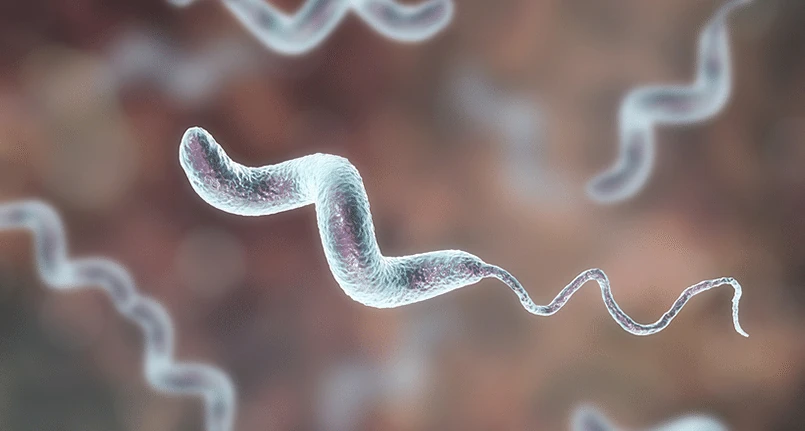Calcium oxalate
Calcium oxalate (CaC 2 O 4 ) is a calcium salt of oxalic acid , a compound that occurs in needle-like crystals, known in botany as raphides. In plants these needles, pointed at the ends and enclosed in vacuoles , represent a defense mechanism against herbivores; plants such as rhubarb , marshmallow , dieffenbachia and parsnip are particularly rich in it . As far as food sources are concerned , in addition to rhubarb (leaves), spinach , tea leaves, kiwi , beetroot: the presence of these microscopic crystals is responsible for the intense burning sensation in the mouth and throat that some people feel after ingesting these foods . In high doses, calcium oxalate is a real poison for the human body, triggering severe disorders of the digestive system and breathing difficulties up to coma.
The calcium oxalate present in the body derives both from the direct contribution of plants which are rich in it, both from the salification of dietary calcium with the oxalic acid contained in food, and from endogenous production (for example starting from vitamin C ) . For this reason, in addition to subtracting calcium from the body, the frequent ingestion of foods rich in oxalic acid can favor the onset of kidney stones in predisposed subjects.
Calcium oxalate stones: risk factors
Both genetic factors and behavioral factors contribute to the formation of calcium oxalate stones . The latter can be corrected to prevent their occurrence at various levels.
| RISK FACTORS | CAUSES | Treatment |
| Reduced volume of urine | Exercise, profuse sweating , reduced dietary fluid intake, heat, diarrhea , vomiting | Increase fluid intake to 2.5-3.0 L/day |
| Hypercalciuria (↑↑ urine calcium ) | Idiopathic, vitamin D intoxication , excess dietary calcium (e.g., supplement abuse ) | Reduction of sodium intake ; therapy with thiazide diuretics ; do not reduce calcium intake except in extreme cases; increase calcium intake to 1000 mg |
| Hyperoxaluria (↑↑ oxalic acid in urine) | Dietary intake (foods rich in oxalates ) and metabolism; inflammatory bowel disease | Reduce oxalate intake; increase the intake of milk and derivatives when consuming foods rich in oxalic acid |
| Hypocitraturia (↓↓ citric acid in urine) | Tubular acidosis , other metabolic acidoses, inflammatory bowel disease , often idiopathic | Initiate a specific supplementation with potassium citrate |
| Hyperuricosuria (↑↑ uric acid in urine) | Excessive ingestion of purines and animal proteins | Reduce ingestion of purines (see gout diet ); initiate allopurinol therapy |
| Increased excretion of sodium | Excessive dietary sodium intake ( table salt and salty foods ) | Reduce your sodium intake |
| Obesity , overweight and insulin resistance | Reduction of citrate excretion, increased excretion of calcium and oxalates | Normocaloric or low-calorie diet combined with regular exercise |
Among all these risk factors for calcium oxalate stones, hypercalciuria is the most common, although its origins are not clearly identifiable in many patients, where the adjective “idiopathic” is forged.
The diet to prevent calcium oxalate stones
FOODS MOST COMMONLY RESPONSIBLE FOR INCREASING URINE OXALATE LEVELS
- Rhubarb
- Dark green leafy vegetables (spinach, chard , rocket )
- Beets
- wheat bran
- Dried nuts
- Soy and derivatives
- Chocolate
- You
- Strawberries
1) Increase the intake of fluids in order to stimulate frequent diuresis with clear urine : in this way the urine will be less concentrated, and the calcium and oxalate more diluted, therefore less inclined to precipitate;
2) Limit the intake of foods rich in animal proteins , especially purines ( shellfish , anchovies , sardines in oil , herring , caviar , offal , meat extracts , meat broth , game, gravies, meat and fish fat ), avoiding high protein , ketogenic or low carb diets . Ingestion of animal protein increases urinary excretion of calcium and uric acid, the latter may promote the formation of uric acid and calcium oxalate stones
3) Limit the consumption of foods rich in oxalates: see the table to the side, and possibly associate them with sources rich in calcium (eg spinach + grated cheese ) as a useful strategy for limiting the absorption of oxalates; in addition, increase the intake of liquids for dilution of the same
4) Reduce sodium intake to less than 2-3 grams per day: prefer food products with no added salt; cook foods with a little salt, eventually replacing it with spices ; if necessary, replace the traditional salt with low sodium salt ; read food labels , avoiding those that contain more than 250 mg of sodium per 100 grams of product
5) Avoid megadoses of vitamin C, which could increase the concentration of oxalates in the urine: any supplementation should be carried out at doses lower than 1000 mg per day
6) Dietary calcium restriction is not necessary to prevent calcium oxalate stone formation; the dietary intake of the mineral should be around one gram per day to avoid possible deficiencies , which would lead to increased absorption of oxalates during digestion ; do not abuse supplements that contain vitamin D and calcium, even if it seems from some studies that – despite what was thought in the past – they can protect against kidney stones.
7) Consume foods rich in citric acid, such as citrus fruits and lemon juice , which tend to alkalize the urine , preventing the formation of uric acid and calcium oxalate stones.
Medicines for the treatment of calcium oxalate stones
Among the potentially useful drugs to prevent the onset of oxycalcic nephrolithiasis we mention:
- thiazide diuretics (e.g. hydrochlorothiazide , chlorthalidone and indapamide ): they have proved to be useful in reducing calciuria and the onset of nephrolithiasis. These drugs also induce a positive calcium balance, consequently promoting an increase in bone mineral density . Dietary sodium restriction is indicated during therapy, while potassium intake should be increased to avoid hypokalaemia, which in turn can lead to hypocitraturia. The usual starting dose is 12.5-25 mg of chlorthalidone or hydrochlorothiazide . Most patients should be supplemented withpotassium citrate . Potassium-sparing diuretics, such as amiloride can help avoid hypokalemia , but triamterene should be avoided due to its low solubility.
- alkalizing agents: citrates inhibit the formation and growth of calcium crystals; potassium citrate is generally preferred, since sodium citrate could promote hypercalciuria
- allopurinol : in case of concomitant presence of hyperuricosuria , since uric acid favors the precipitation of calcium oxalate crystals, allopurinol is useful because it suppresses the synthesis of uric acid, consequently reducing its urinary excretion
- fish oil : reduces the concentration of calcium in the urine, furthermore kidney stones are very rare among the Inuit of Greenland; it could therefore be useful in the prevention of calcium oxalate kidney stones




